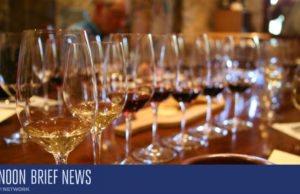BORDEAUX, FRANCE – June 20, 2017 – Wine and spirits making may be centuries-old traditions, but the logistics of bringing them to market today require 21st century solutions, from e-commerce to analytics. In addition, advances in science are leading to new production styles and fresh understandings of the human experience through emerging fields like neuroenology, which examines the brain’s role in the pleasurability of taste. These are among the timely and provocative topics that have been addressed within the past 24 hours at Vinexpo Bordeaux 2017, currently underway at Bordeaux’s Parc des Expositions.

China is projected to drive global consumption of still and sparkling wine to 2020 at a growth rate of 4.5 percent according to an Independent Wine and Spirit Research (IWSR) study released earlier this year by Vinexpo. Yesterday’s keynote presentation, Big Data at the Heart of the Wine Industry’s New Opportunities, looked at the growing role of technology to increase sales in the Chinese market. Lei Zhao, general manager of online retailer Tmall Food, and Ada Xu-Fanouillere, international business development manager of Alibaba France, noted that Alibaba’s algorithms create unique consumer identities for each of its 500 million users, which can pinpoint a person’s tastes based on seemingly unrelated preferences, such as music interests. These data connections afford new opportunities for advanced marketing, with online search results tailored around a user’s greater digital footprint.
The past two years have seen a variety of wine-related digital services enter the market, spurred by technological advances and the rise of the sharing economy. A Vinexpo conference this morning, How New Digital Wine Tech Services Can Drive Wine Professionals’ Efficiency, helped attendees navigate the plethora of new B2B2C solutions available to the industry. The event was moderated by Sylvain Dadé, CEO of Sowine, joined by four leading executives on the wine tech scene:
- Nicholas Oakes of Wine Searcher spoke about the importance of adapting to the market. “B2C is booming and producers and sellers have many different tools to reach consumers. What works in China will not necessarily work in the Unites States or Europe. Listening and adapting is key in the digital age.”
- Philippe Hugon, CEO of Vinternet and founder of Vin.co and Eric Lévy, CEO and cofounder of Actiwine, both referenced the time savings that technology affords. Hugon remarked, “With e-commerce on the rise, information needs to be accurately updated across multiple platforms simultaneously. This efficiency has the added benefit of saving time for important in-person business.”
- Per Vincent Chevrier, CEO of VinTeam and chairman of WineTech, consumers are now better informed. “This is empowering and motivates them to buy. It’s a win-win for consumers and wine professionals.”
On Vinexpo’s exhibition floor, Earl Hewlette, CEO of tech-driven Terressentia in South Carolina, commented on balancing quality and efficiency in spirits production, noting, “Science and technology are improving the process of distilling spirits without compromising the product. We’re able to eliminate a lot of waiting, and what used to take four to six years might now only take one.”
Once in the hands of consumers, is there a scientific basis for the pleasure of wine tasting? That’s the key question at the core of the emerging field of neuroenology, and the topic of an intriguing Vinexpo session yesterday afternoon. World-renowned sommelier Philippe Faure-Brac and neuroscientist Gabriel Lepousez of the Institute Pasteur and co-founder of École du Nez, explored the extent to which context plays a role in how a taster experiences a particular wine. Among the key takeaways:
- The setting is as important as the wine. A location’s temperature, design, lighting and color palette influence the perception of taste. For example, the same wine will be perceived four unique ways in four ambient lights. Faure-Brac noted red tones might lead tasters to experience a rounder, more intense product versus experiencing higher acidity levels in blue lighting.
- Tasters are vision-biased. Discussing the brain chemistry behind this phenomenon, Lepousez explained that when visual and olfactory information arrives simultaneously, vision overtakes smell and taste in a person’s perception. And, based on visual cues, the brain aims to predict the future, preemptively releasing dopamine before tasting a wine in anticipation of pleasure. When cues lead to false predictions, dopamine levels disproportionately decrease, which the brain reads as displeasure. Ultimately vision bias can inform packaging decisions, including the debate around cork alternatives. Neuroscience suggests taste, not just brand perception, is at stake.
For the full program of events, visit www.vinexpobordeaux.com.
About Vinexpo
Founded by the Bordeaux Gironde Chamber of Commerce and Industry in 1981, Vinexpo is the world’s leading show for wine and spirits professionals and a partner for the wine and spirits industry worldwide. Vinexpo is held in Bordeaux in odd-numbered years. Since 1998, Vinexpo Hong Kong (formerly known as Vinexpo Asia-Pacific) has taken place in even-numbered years, and in 2014, Vinexpo expanded to the Japanese market with the debut of a third biannual fair Vinexpo Tokyo. The two have become key exhibitions of the industry in Asia. In 2017 Vinexpo launched a new concept, Vinexpo Explorer, featuring two days of business meetings and discovering vineyards. Vinexpo New York, which takes place for the first time March 5-6, 2018, will open doors to the U.S. market for international exhibitors.


















